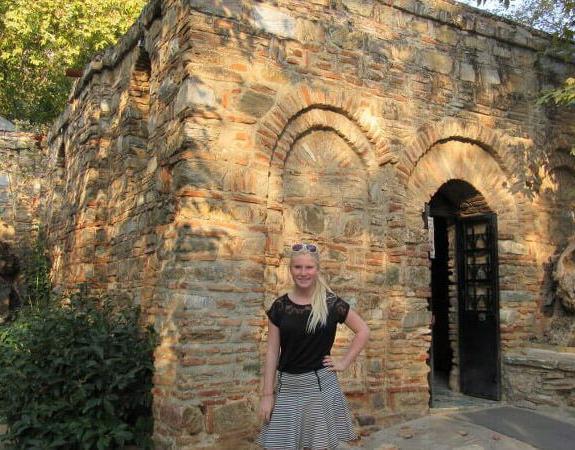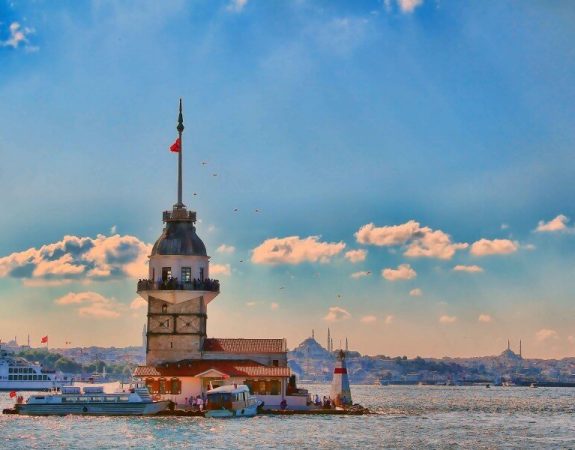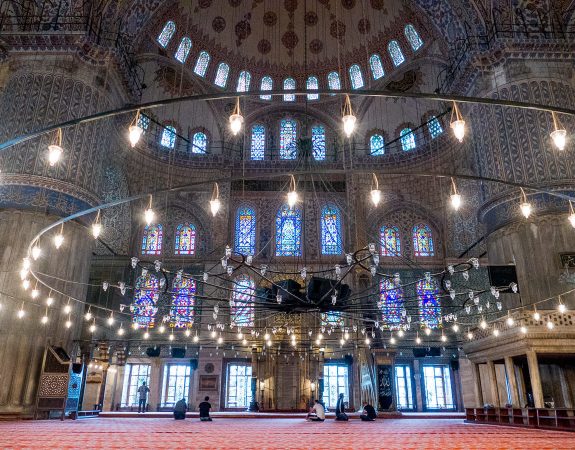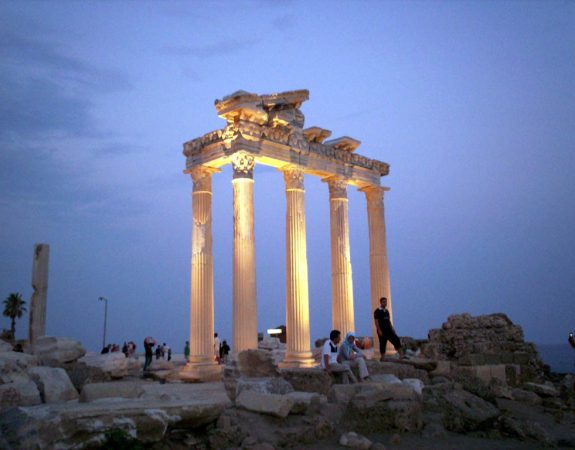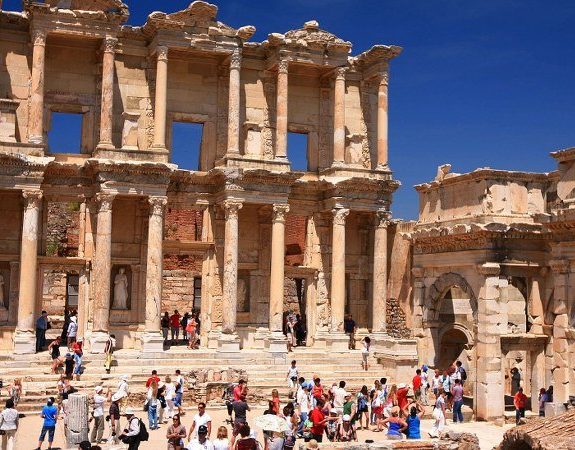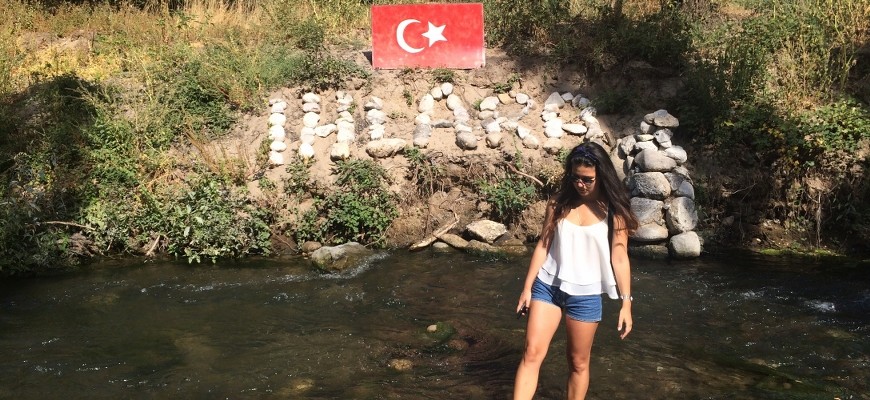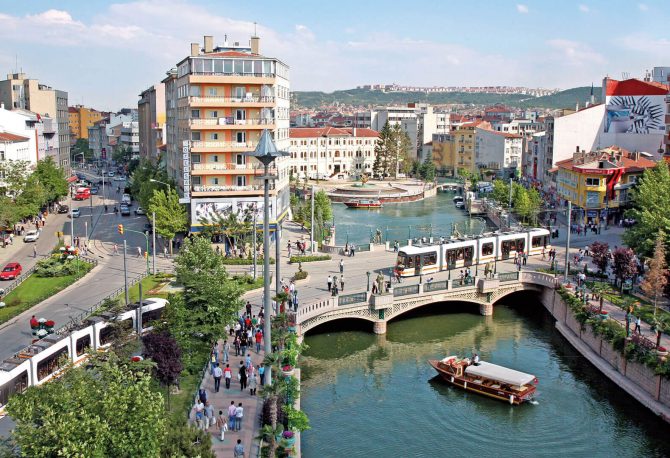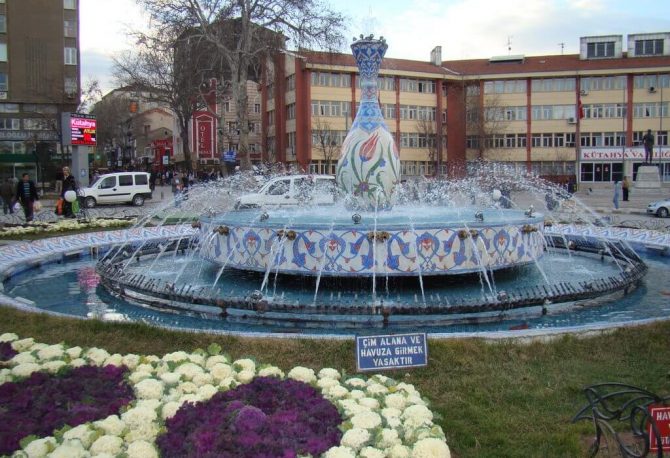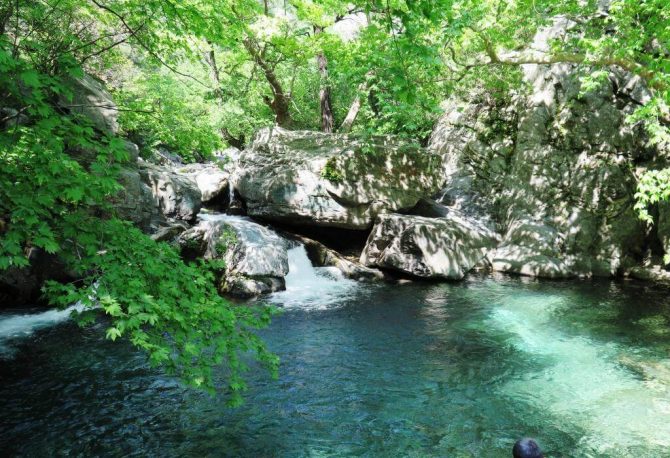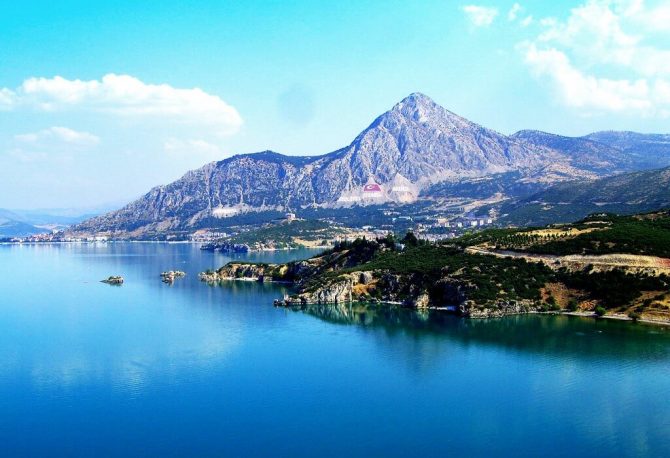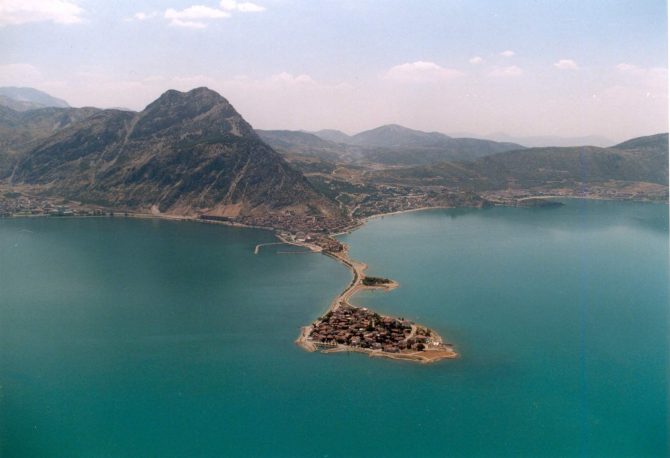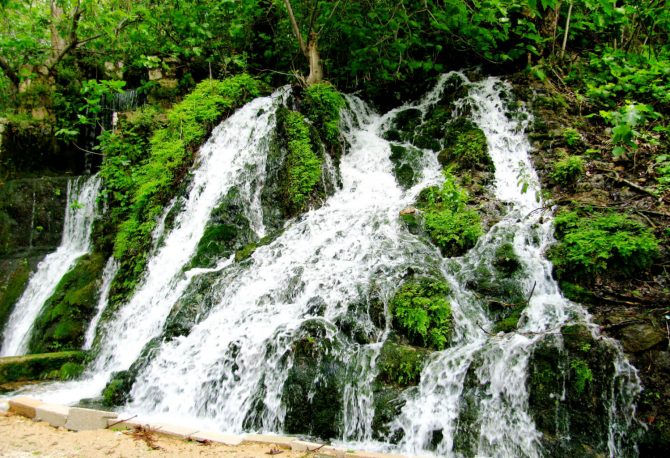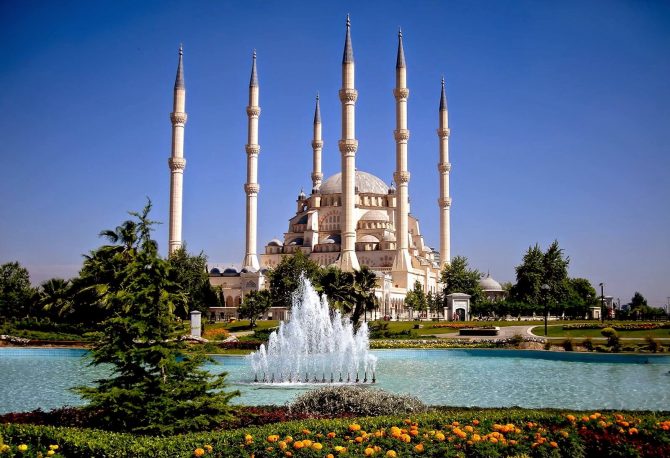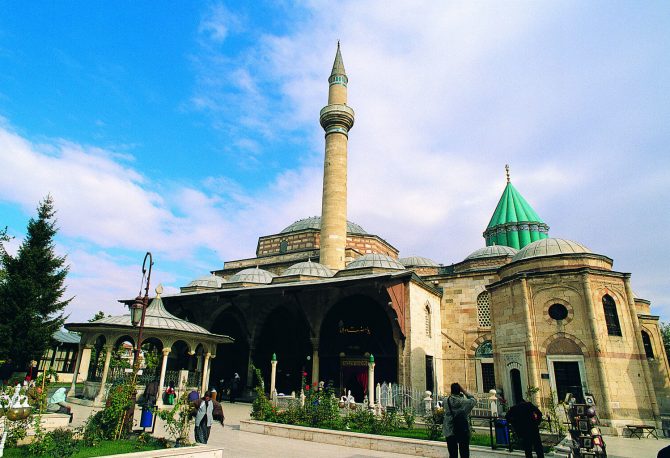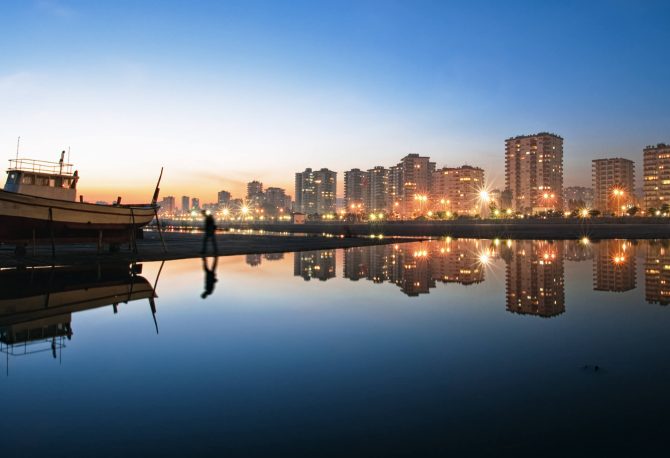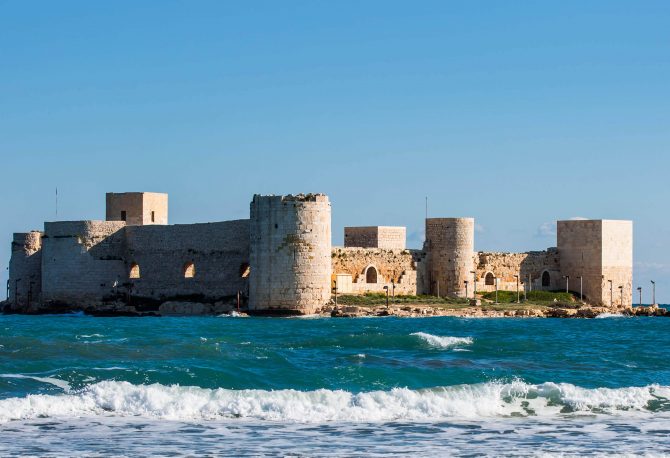For tourists, Eskisehir is little more than a busy, somewhat industrial city acting as the transportation gateway into Central Anatolia, with lots of banks and shops, a few clubs, lots of meerschaum (a soft, white mineral used for crafting pipes), and some passable museums. For Turks, however, Eskisehir, or “Old City,” represents something more: a regional capital with a history stretching back over 3000 years to the Greco-Roman city of Dorylaeum, noted for the curative properties of its thermal baths. As a major industrial transit route, Eskisehir held a vital strategic role in the War of Independence, and today many Turks come from nearby towns for the active nightlife, fueled by a large student community. Though travelers can fill an afternoon or night, most prefer to spend their time and money elsewhere.
Since the 16th century, Kutahya has been renowned as a center of legendary ceramic artistry. The entire city mosques, hotels, fountains, and even the bus station is tiled with intricate patterns of blue and white. Students from Dumlupinar University help keep the city young, and Kutahya’s open square, lined with numerous internet cafes and shops, creates a busy street scene. But away from the city center, families still live in aging Ottoman houses and women laboriously wash their rugs in the street. Close to Kutahya rest the dramatic ruins of Aizanoi, an ancient Roman city with a spectacularly well-preserved temple.
Antakya, site of the ancient city of Antioch, the throngs of tourists diminish, as does the Mediterranean resort atmosphere. Antakya offers sprawling markets in the old sections of town, manicured tea gardens, and the world famous Hatay Museum, housing the world’s finest collection of Roman mosaics. It was in Antioch that Christianity received its name; the side of Mt. Stauros is riddled with caves and tunnels where the underground religion was kindled, including the legendary Grotto of Saint Peter the oldest church in the world.
Surrounded by vast fields of innocuous-looking poppies, Afyon (“opium”) is a leading producer of the world’s opium, grown here legally for pharmaceutical use. Afyon is prourl of its role in the War of Independence, when Atatürk made his headquarters here. It also boasts two excellent but rather small museums. If spectacular views are your thing, a climb to the towering Hittite fortress will likely be the highlight of your stay. Modern-day Afyon, however, is a rather nondescript town, so it’s best to stop just long enough to see the sights and try some lokum (Turkish delight) before getting on your way again.
No one walks in Egirdir. It’s more of a laid-back amble, cultivated to match the pace of life in this small, conservative fishing town in Taurus mountains. Under the watchful eye of a nearby military base, Egirdir is surrounded by Turkey’s fourth largest lake, Egirdir Gölü (540 sq. km), whose color shifts with the strength of the wind, rippling from jade to tones of gray. The lake yields innumerable carp and bass, and in the fall, orchards fill with golden delicious apples.
Formerly known as Alexandretta, İskenderun was founded by Alexander the Great to commemorate his decisive victory over the Persians at Issus. As the principal port city of Antioch, Alexandretta became a powerful and cosmopolitan burg in its own right. Modern-day İskenderun has retained very little of historical interest, but its waterfront promenades and wide boulevards are pleasant to stroll, and its position on the Mediterranean trade routes has protected the diversity of the towns’ Christian, Muslim, and Jewish populations. To the south, some pleasant beaches make İskenderun a popular destination for Turkish and Arab tourists.
Turkey’s sixth-largest city is appropriately named after Adanus, the Greek god of weather. The average June-August temperature is 100°F, with high humidity and a persistent hot wind that seems to issue from a giant invisible hairdryer. If you visit in these months, the weather will probably occupy most of your waking thoughts. Modern Adana is an agricultural town, wealthy because of its pivotal role in the Turkish textile industry. Its famous Adana kebap (spicy minced lamb and herbs, flattened into strips and grilled) tantalizes the eager taste buds of locals and tourist alike. The nearby US military base at İncirlik does its part for the local economy. Adana has a large otogar and many hotels, and its airport is a stopping point between Northern Cyprus, Antalya, and the Middle East. The city is home to several sights, both historical and modem. The new Sabancı Merkez Camii, the second-largest mosque in Turkey, dominates Adana’s skyline, looming proudly behind the glittering Roman bridge. In 2000, Adana’s proximity to an earthquake zone narrowly saved it from being chosen as the site of a nuclear power reactor.
Come, come again and again! Come be you unbeliever, idolator or fire worshipper.
Whoever you are and whatever your condition come! Our hearth is not the threshold of despair. Even If you have fallen a hundred times, come!
—Celeddin-i-Rumi
Konya (pop. 675,000) brims with the lingering flourishes of the Selçuk dynasty, evoking a world of whirling mystics and hushed prayers in sacred candlelit mosques. The city has long played host to spiritual visionaries. In Roman times, when it was called Iconium, a visit by St. Paul initiated the city’s gradual transformation into a Byzantine Orthodox patriarchate. After the Selçuks of Rum invaded and made it their capital in the 11th century, Konya’s churches were replaced with the greatest mosques of the era. In 1228, the great Persian poet Celeddin-i-Rumi, known to many Turks simply as Mevlâna (“our master”), moved to Konya with his family from their home in Afghanistan. Rumi’s poetry and life inspired the now- famous Sufi order known for its Whirling Dervishes. Today, Muslims often stop in Konya to visit Mevlâna’s tomb before embarking on the hajj to Mecca.
Despite a large student population, Konya remains one of Turkey’s most religiously conservative cities. Konya University, with 45,000 students, has had a huge effect on the city’s tolerance, although staunch conservatism remains. Modest, respectful dress may save you uninvited attention; some women travelers choose to wear long skirts and traditional headscarves. Shorts are not recommended for men or women. More information concerning women in public is below.
A small fishing village 150 years ago, Mersin has blossomed into a mid-sized cosmopolitan city in response to Adana’s need for a Mediterranean port. By no means a tourist town, the free stretch of beach and adjoining greenery of Atatürk park, the breezy city center and excellent, cheap hotels still make Mersin a pleasant visit. The city is also useful as a departure point for ferries to Northern Cyprus.
The majority of visitors to this small resort town are Turks on a short holiday from nearby cities. German tourists and the Americans stationed at İncirlik military base make up much of the rest. Despite the unchecked hotel construction brought on by the recent tourist boom, Kizkalesi still remains fairly small, and it offers hedonistic beaches and a vibrant nightlife. The nearby sites of Kanlidivane and Adam Kayalar also make fine daytrips, allowing the amateur archaeologist to leave Kizkalesi with something more than memories of sun, sand, and beer.



